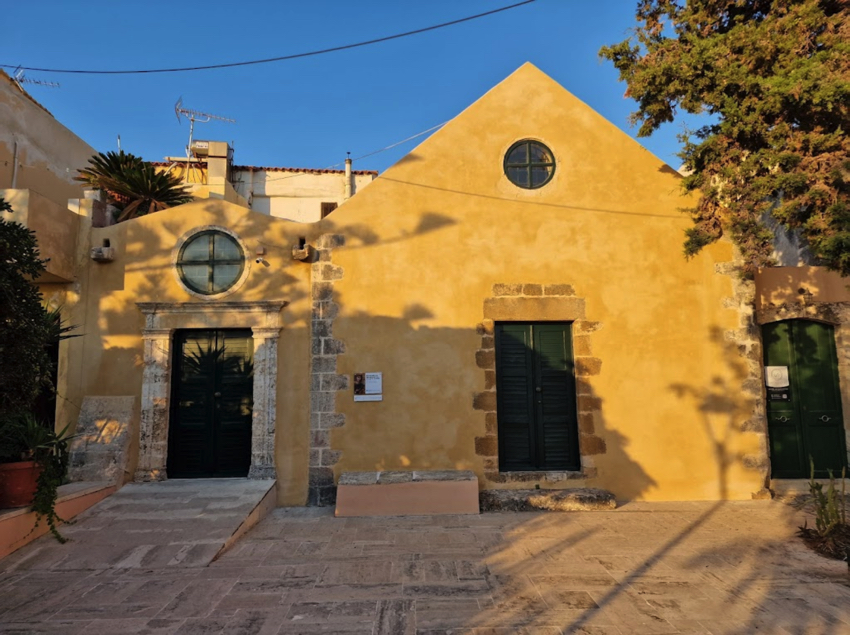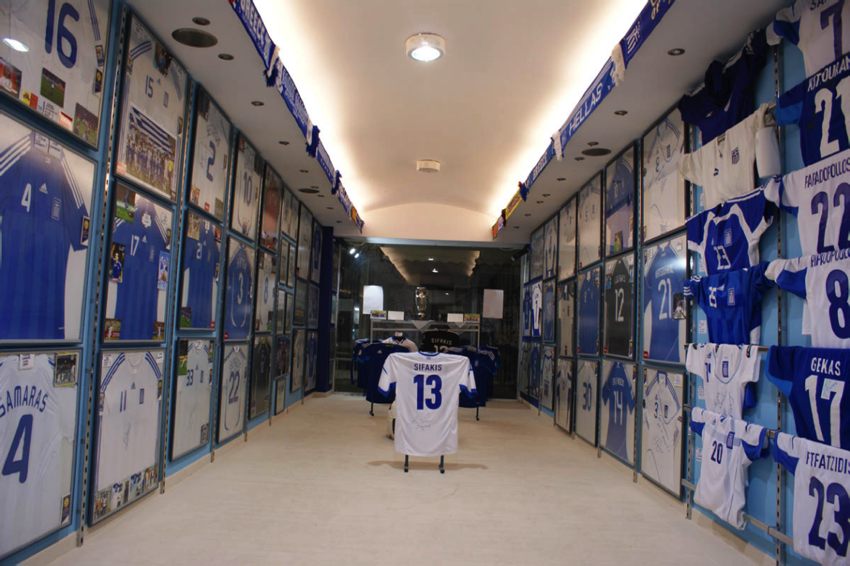16 Best Things to Do in Chania in 2025
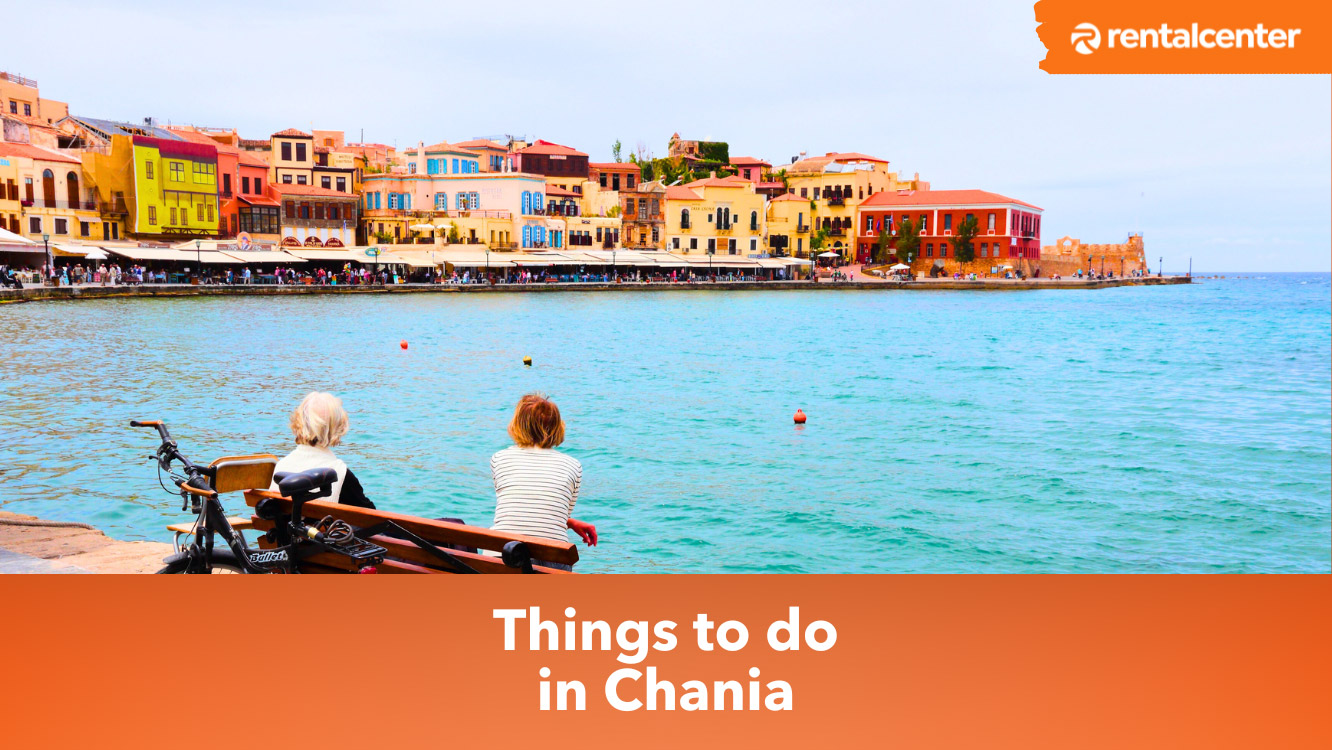
Chania stands as a testament to the timeless beauty of Crete. Travellers from all corners of the world arrive ready to experience Chania’s history and culture. Chania is located on the northwest coast of Crete. Chania’s Venetian architecture and pristine beaches create a memorable experience.
Determining what to do in Chania is about being immersed in the city’s confines and experiencing what it has to offer. Every location offers a unique story waiting to be discovered and shared, from the bustling Municipal Market to the silent beauty of the Akrotiri Peninsula.
Visitors seeking the best places to visit in Chania are spoiled for choice. The ancient ruins resonate with tales of bygone eras, while the modern cafes and boutiques showcase contemporary Cretan life in all its vibrancy. Chania merges the old with the new, ensuring that travellers get a taste of both worlds.
There are several things to do in Chania. Chania offers various activities that cater to every traveller’s whim. Activities range from hiking in the breathtaking Samaria Gorge to soaking up the sun on the pink sands of Elafonissi Beach.
Listed below are the top things to do in Chania in 2025.
- 1. Explore the Old Town’s winding streets: The Old Town of Chania enchants visitors with its maze of cobbled alleys and stone-built houses. Venetian and Ottoman influences are evident in the architecture and historic buildings. Every turn reveals quaint shops and traditional taverns.
- 2. Visit the Maritime Museum of Crete: The Maritime Museum offers a deep dive into Crete’s nautical history. Exhibits range from ancient naval battles to World War II artefacts. The collection of ship models, sea creatures, and naval instruments paints a vivid picture of Chania’s maritime legacy.
- 3. Relax and enjoy the sandy beaches of Elafonissi: Elafonissi, with its pink-tinged sands and crystal-clear waters, is a beach lover’s paradise. Its shallow lagoons are perfect for families and those seeking a tranquil escape. The unique colour of the sand, due to crushed seashells, adds to its allure. Sunbathers and swimmers alike find solace in its pristine beauty.
- 4. Wander through the Botanic Park & Gardens of Crete: The Botanic Park & Gardens of Crete is a haven for plant enthusiasts. It boasts a diverse collection of Mediterranean and tropical plants. The park offers both a learning experience and a serene escape from the urban hustle.
- 5. Take a leisurely walk along the Seawall to the lighthouse: Chania’s seawall extends towards the iconic lighthouse. A leisurely walk across offers panoramic views of the harbour and the distant horizon. Sunsets paint the sky in hues of orange and purple, providing a picturesque backdrop. The gentle sea breeze and the rhythmic sound of waves make it a calming experience.
- 6. Stroll through the Old Venetian Port: The Old Venetian Port welcomes visitors with its charming cafes and historic buildings. Gondolas sway in the waters, reminiscent of a bygone era. The port’s storied past is evident in its aged facades and historic landmarks.
- 7. Experience ancient history at the Minoan’s World 3D Museum: The museum brings the Minoan civilization to life through cutting-edge 3D technology. Visitors journey through Crete’s ancient palaces, meeting its kings and queens. The immersive experience offers a unique blend of education and entertainment.
- 8. Visit the Monasteries of Akrotiri Peninsula: The Akrotiri Peninsula is home to some of Crete’s most iconic monasteries. The Monastery of Agia Triada stands out with its imposing architecture and lush vineyards. The serene surroundings offer a spiritual respite, and the monasteries, with their centuries-old frescoes and intricate woodwork, transport visitors to a different era.
1. Explore the Old Town’s winding streets
Chania Old Town combines Venetian and Ottoman architecture, blending ancient walls with modern cafes and boutiques. The area attracts 1,000 daily visitors, offering a chance to experience local life and taste traditional cuisine. The narrow streets and historical charm make it a Chania highlight.
The Old Town receives tourists year-round, with peak numbers during summer. Even in the off-season, the streets remain lively. Many visitors return, drawn by the unique and timeless experience.
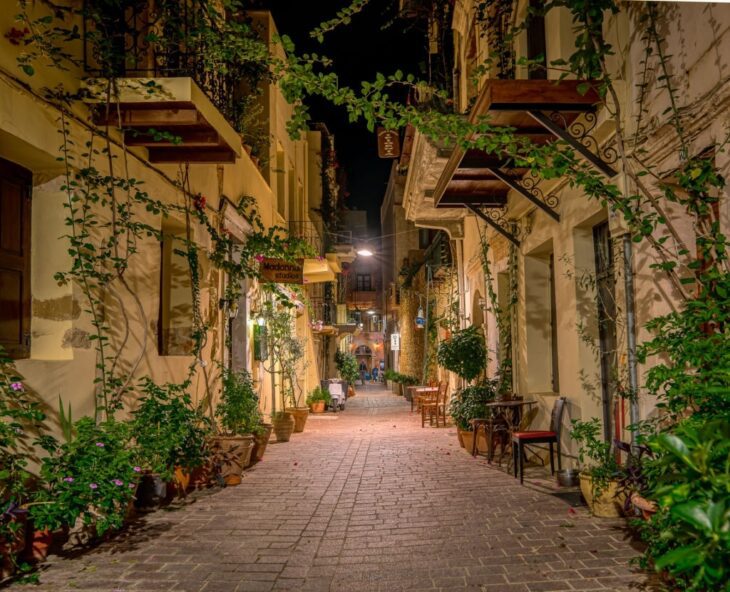
Chania International Airport lies 15 kilometers (9 miles) away, requiring a 20-minute drive to reach the Old Town. The Venetian Harbour and lighthouse enhance its appeal for art enthusiasts. Performers and musicians add energy, captivating both children and adults.
Ambassadors Residence Boutique Hotel in the Old Town provides luxury stays, averaging €220 ($239, £192) per night. Kouzina EPE offers authentic dining nearby, with meals costing around €30 ($33, £26) per person. Both highlight the charm of Chania’s culinary and cultural offerings.
Chania Old Town ensures safety with well-maintained streets and police patrols. Entrance is free, welcoming all visitors to explore at their own pace. Reviews consistently praise the town’s historical authenticity and its ability to merge past and present, leaving a lasting impression that draws people back repeatedly.
2. Visit the Maritime Museum of Crete
The Maritime Museum of Crete immerses visitors in the island’s rich naval history and tradition. The museum occupies the Firkas Fortress, a historical structure that has overseen the Old Venetian Harbour for centuries. 150 history enthusiasts visit every day.
The Maritime Museum of Crete has become popular over the years, making it a Chania must-see. The drive to the museum from Chania International Airport is 15 kilometres, taking 20 minutes of travel time. Visitors find themselves engrossed in various ship models and ancient maritime artefacts. Children engage with interactive displays showing seafaring techniques and the importance of the Mediterranean Sea in global history.
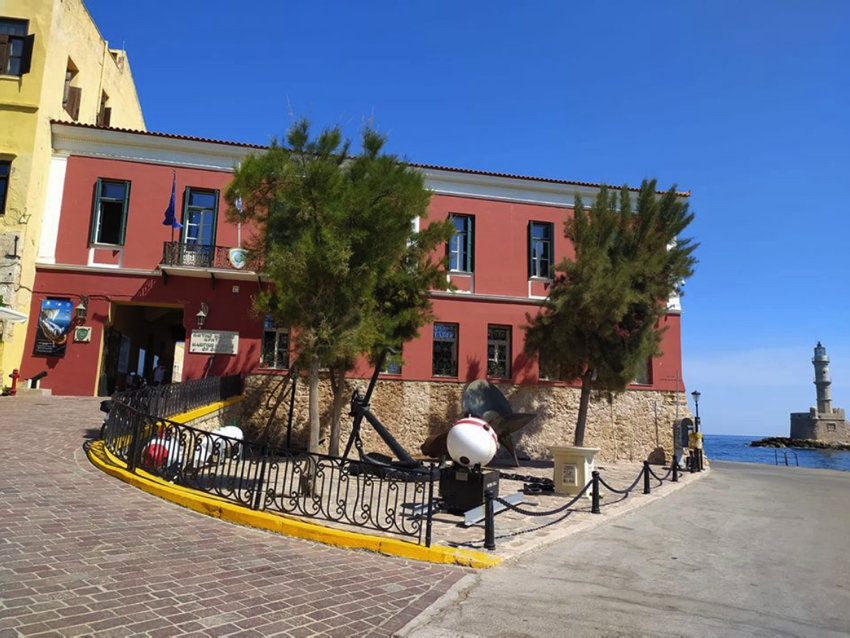
Domus Renier Boutique Hotel, a short walk from the museum, offers guests a blend of elegance and history, with its average rates set at €560 per night. Tholos, another nearby gem, provides a tranquil ambience for diners to appreciate the true essence of Cretan cuisine, with an average meal price of €25 per person.
Surveillance cameras and security personnel ensure the safety of both the artefacts and the visitors. The entrance fee for adults is €3 and €2 for kids. Visitor reviews praise the well-curated exhibits and the knowledgeable staff. Many express appreciation for the comprehensive view of Crete’s maritime history that the museum provides.
3. Relax and enjoy the sandy beaches of Elafonissi
Elafonissi has one of the most relaxing and enjoyable sandy beaches in Chania. Many regard Elafonissi as a gem on the southwestern coast of Crete. The beach has clear turquoise waters and soft pinkish sands that offer a unique spectacle. Descriptions of Elafonissi as a Chania must-see are frequent in travel guides and magazines.
1,500 visitors flock to Elafonissi every day during peak tourist season. The beach’s beauty and uniqueness make it a sought-after destination for locals and tourists. The vast expanse of the beach ensures that everyone finds a spot to relax, even on crowded days.
Elafonissi is located 90 kilometres from Chania International Airport. The journey by car takes 1 hour and 45 minutes. The journey is long but not tiring, as travellers go through scenic routes showcasing the diverse landscapes of Chania.
Elafonissi’s shallow waters make for the best environment for snorkelling, which reveals a vibrant underwater world. Visitors spend hours sunbathing or simply taking in the natural beauty around them. The beach becomes a playground for kids, where they indulge in sandcastle building and beach games while wading through the gentle waves.
Lafo Rooms is situated in close proximity to the beach and offers simplicity and understated elegance for guests to soak in the surrounding’s natural beauty. Its interior includes whitewashed walls, and rooms have cosy furnishings that give a touch of Greek aesthetics. A night’s stay costs €110 to €150, which makes it an attractive option for seeking tranquillity near the beach.
Kalomirakis Tavern offers an authentic Cretan dining experience near Elafonissi Beach. The. The menu captures the local culinary traditions, which makes the tavern a must-visit for Elafonissi beachgoers. Prices range from €10 to €15 per person.
Lifeguards ensure safety within the beach area. They are stationed at regular intervals to ensure the well-being of swimmers and beachgoers. The beach has clear signage about safe zones for swimming. The shallow waters make it safer for children and non-swimmers.
Access to the Elafonissi beach is free, as it’s open to the public. Amenities like sun loungers or umbrellas are available for purchase or rent. Parking areas are available close to the beach, with some requiring a nominal fee.
Elafonissi is an easy recommendation to make, according to reviews. Reviewers mention the mesmerising colours of the water and the pinkish sand, along with the serene atmosphere. The cleanliness of the beach and the well-maintained facilities are other positives stated in reviews.
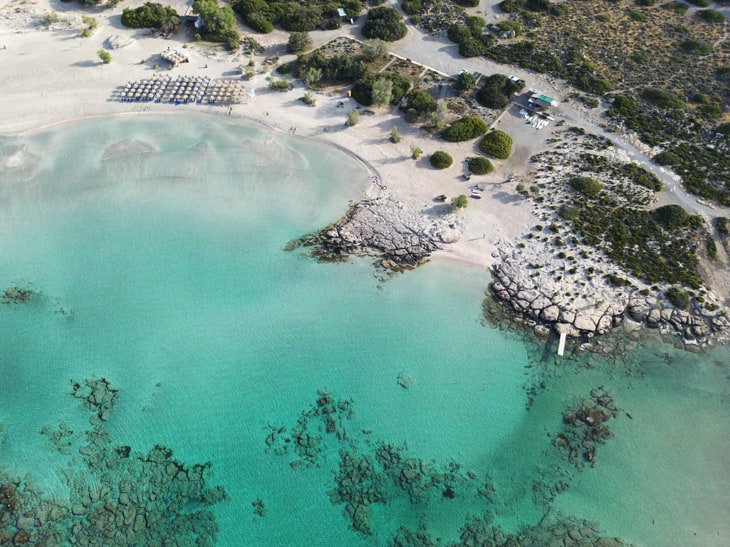
Lafo Rooms is situated in close proximity to the beach and offers simplicity and understated elegance for guests to soak in the surrounding’s natural beauty. Its interior includes whitewashed walls, and rooms have cosy furnishings that give a touch of Greek aesthetics. A night’s stay costs €110 to €150, which makes it an attractive option for seeking tranquillity near the beach.
Kalomirakis Tavern offers an authentic Cretan dining experience near Elafonissi Beach. The. The menu captures the local culinary traditions, which makes the tavern a must-visit for Elafonissi beachgoers. Prices range from €10 to €15 per person.
Lifeguards ensure safety within the beach area. They are stationed at regular intervals to ensure the well-being of swimmers and beachgoers. The beach has clear signage about safe zones for swimming. The shallow waters make it safer for children and non-swimmers.
Access to the Elafonissi beach is free, as it’s open to the public. Amenities like sun loungers or umbrellas are available for purchase or rent. Parking areas are available close to the beach, with some requiring a nominal fee.
Elafonissi is an easy recommendation to make, according to reviews. Reviewers mention the mesmerising colours of the water and the pinkish sand, along with the serene atmosphere. The cleanliness of the beach and the well-maintained facilities are other positives stated in reviews.
4. Wander through the Botanic Park & Gardens of Crete
Travellers wander through the Botanical Park & Gardens of Crete’ showcase of Chania’s flora and fauna. The park is situated in the foothills of the White Mountains and spreads across a vast expanse of lush landscapes. It is a haven for plant enthusiasts and nature lovers. The Botanic Park & Gardens is another Chania must-see.
The Botanical Park and Gardens of Crete welcomes 500 visitors every day. Parkgoers immerse themselves in the park’s botanical wonders and the allure of diverse flora and fauna. The numbers fluctuate depending on the season, with spring and summer attracting more visitors.
Chania International Airport is about 32 kilometres from the park. Travellers cover the distance in 40 minutes by car. The botanical experience ahead. Signs along the way guide visitors, ensuring a smooth trip to the park.
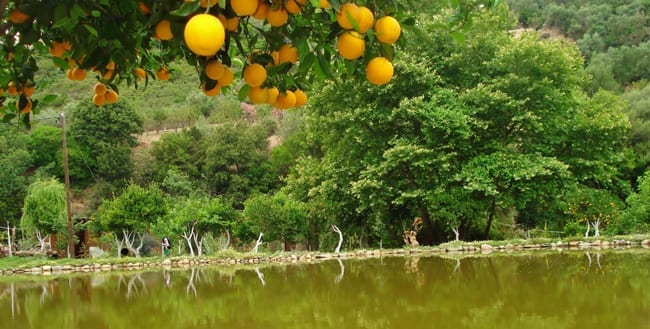
To Exari is a hotel accessible to the park with rooms exuding a rustic and quiet charm. Its ambience complements the beauty of Chania’s natural landscape well. The price per night ranges from a reasonable €40 to €80, which makes it perfect for travellers looking for affordable comfort.
The Botanical Park and Gardens of Crete feature vibrant flowers and exotic plants from around the world. The park’s in-house restaurant serves Cretan cuisine, with meals priced between €10 and €15 ($11–$16, £9–£13) per person, offering visitors a culinary complement to their exploration of the gardens.
Informative plaques provide insights into the various plant species, which enrich the learning experience. Children find joy in the park’s butterfly garden, where colourful winged creatures flutter about. The kids engage in educational games that introduce them to the world of botany.
The Botanical Park & Gardens ensures safety with clear pathways and roaming security personnel, allowing visitors to explore comfortably. Adult entry costs €7 ($8, £6), while children aged 6 to 12 pay €4 ($4.50, £3).
The entrance fee helps maintain the park’s conditions and fund its conservation efforts. Reviews express admiration for the vast collection of plants and appreciate the efforts put into conserving and showcasing them. Many commend the park for its educational initiatives and emphasise its role in promoting eco-awareness.
5. Take a leisurely walk along the Seawall to the Lighthouse
The seawall stretching towards the lighthouse invites visitors to a leisurely walk. The lighthouse, including the seawall approaching it, is one of the most serene areas in Chania. Visitors are enamoured by breathtaking views of the azure waters set against the historical backdrop of the town. The journey to the lighthouse, with its panoramic vistas, has secured its place as a Chania must-see.
The seawall and the lighthouse get 600 visitors every day. Tourists and locals frequent the seawall to capture the beauty of sunsets or to indulge in a peaceful stroll. The seawall and lighthouse are 14 kilometres away from Chania International Airport, a 25-minute drive.
Travellers enjoy the mesmerising views of the sea and nearby mountains. Ancient fortifications and maritime artefacts pepper the route. The lighthouse is a majestic sight in itself, a reflection of the city’s maritime history. Children watch the boats sail by and engage in playful races along the seawall’s stretches.
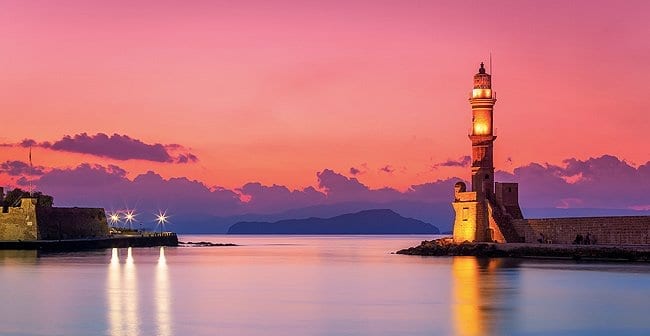
Porto Veneziano provides a peaceful stay near the seawall and lighthouse, reflecting the maritime character of the area. Room rates range from €120 to €150 ($131–$164, £105–£131) per night. Neoria Fish Tavern, located nearby, combines maritime and traditional Cretan design, offering meals priced between €15 and €25 ($16–$27, £13–£22).
The pathways are well lit in the evenings, making them safe even at night. Regular maintenance ensures the paths are free from hazards. Local police and security personnel patrol the area for everyone’s safety. Access to the seawall and the path leading up to the lighthouse is free. Reviews highlight the peaceful environment and the picturesque views as the main draws.
6. Stroll through the Old Venetian Port
Strolling through the Old Venetian Port allows travellers to breathe in Chania’s rich history. The Old Venetian Port is a vibrant hub filled with centuries-old buildings that reflect Venetian architecture. The port serves as a historical site and a gathering point for locals and tourists.
The blending of ancient architecture with the natural beauty of the harbour makes it a Chania must-see spot. 700 visitors wander the streets of the Old Venetian Port. It has become a focal point for those eager to immerse themselves in Chania’s cultural tapestry. The port’s appeal draws casual strollers and photographers.
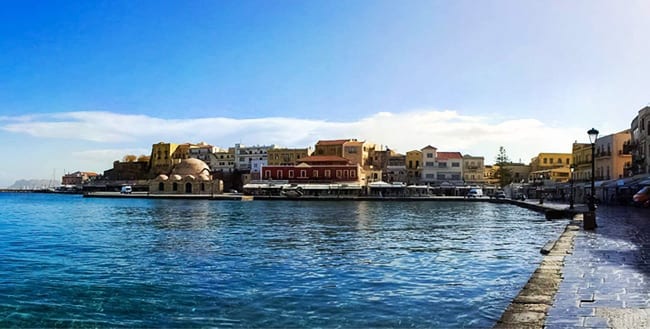
The Old Venetian Port lies 14 kilometers (9 miles) from Chania International Airport, reachable in 20 minutes by car. The ancient lighthouse provides panoramic views of the harbour, while the Maritime Museum showcases Chania’s nautical history.
The kids feed fish near the harbour or partake in boat rides that dot the port. Regular patrols by local security and well-maintained walkways ensure travellers are secure. The port’s well-lit ambience during the night is further proof of its safe environment.
Kriti Hotel, near the Old Venetian Port, combines contemporary elegance with comfort. Its location offers convenient access to the historic port. Room rates average between €100 and €140 ($109–$153, £87–£122) per night.
TO XANI Restaurant, a short walk from the Old Venetian Port, operates in a historic building reflecting Chania’s heritage. The rustic furnishings and soft lighting create an immersive dining experience. Menu prices range from €10 to €25 ($11–$27, £9–£22) per person.
There’s no entrance fee to stroll through the Old Venetian Port, but certain attractions within or adjacent to the port, such as museums or boat tours, have their own ticket prices. Reviews highlight the port’s magical sunsets and the vibrant cafes lining its paths. Many past travellers recount tales of comfortable strolls.
7. Experience ancient history at the Minoan’s World 3D Museum
Minoan’s World 3D Museum allows visitors to experience Crete’s ancient history. The museum combines modern technology and ancient tales to bring to life the glory of the Minoan civilization, one of the earliest and most influential in Europe. The museum allows visitors to delve deep into a world thousands of years ago, making it a Chania must-see.
The museum welcomes 500 visitors daily, eager to explore Minoan culture. Visitors leave with a deeper understanding of ancient Crete’s influence on art, architecture, and society. It is located 14 kilometers (9 miles) from Chania International Airport and is accessible within 20 minutes by car.
Interactive exhibits dominate the museum. Virtual reality transports visitors to Knossos Palace, allowing them to witness its grandeur firsthand. Detailed dioramas and holograms bring Minoan daily life and rituals, along with their myths, into sharp focus. Animations of Minotaurs and labyrinths captivate children, providing entertainment and education.
Kydon, The Heart City Hotel, near Minoan’s World 3D Museum, features a soothing design with plush furnishings. Room rates range from €150 to €200 ($164–$218, £131–£175) per night.
Kapari Restaurant Chania, located near Minoan’s World 3D Museum, offers a warm ambiance and a curated menu of Cretan dishes. Meals are priced between €10 and €15 ($11–$16, £9–£13) per person.
Surveillance cameras and security personnel maintain the safety of visitors and the replicas on display. The facility meets international safety standards, ensuring a secure environment. Tickets cost €18 ($20, £16) for adults, €12 ($13, £10) for children 12 and under, and €42 ($46, £37) for a family bundle of two adults and one child.
Seniors and visitors with special needs receive discounted tickets priced at €16 ($17, £14). Reviews emphasize the seamless integration of technology and history, bringing ancient tales to life. Visitors praise the immersive experience, intricate visuals, and compelling narratives.
8. Visit the Monasteries of Akrotiri Peninsula
The Monasteries of Akrotiri Peninsula demand a visit. The monasteries provide a serene retreat from the bustle of urban life. Ancient walls hold stories of monks and the passage of time. The peninsula and its monasteries are a Chania must-see destination.
The Monasteries of Akrotiri Peninsula greet 300 visitors every day. The Akrotiri Peninsula is just 3 kilometres from Chania International Airport, a 5- to 10-minute trip. The monasteries envelope visitors in religious art and architecture. The spacious courtyards and open spaces provide room for children to play, and certain monasteries offer guided tours tailored to younger audiences.
The Youth of Dope Hotel, located nearby, provides rooms with a relaxed, contemporary atmosphere at an average rate of €65 ($71, £57) per night. Irene’s Tavern, close to the hotel, serves meals averaging €35 ($38, £30) per person in a setting that reflects traditional Greek warmth and charm.
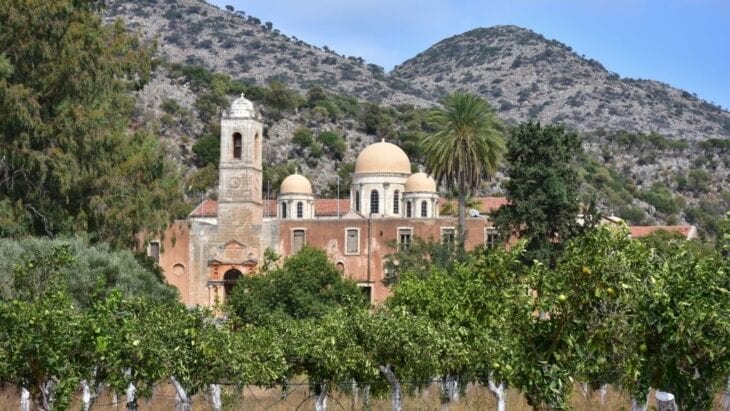
The Monasteries of Akrotiri Peninsula remain secure through regular maintenance and security personnel. Agia Triada Monastery charges a €2.5 ($3, £2) entry fee. Visitors praise the serene ambiance, well-preserved historical details, and panoramic views of Chania from the peninsula.
9. Marvel at the beauty of Balos Beach
Balos’ marvellous beauty makes it one of the most iconic beaches in Chania. Azure waters blend with white sands, creating a paradise that offers respite and rejuvenation. It is near Kissamos and showcases the pristine beauty of the Mediterranean. Balos is a Chania must-see destination that combines the allure of turquoise waters with untouched nature.
Balos attracts 1,200 daily beachgoers with its remote location and crystal-clear waters, offering an authentic Grecian experience. The beach lies 69 kilometers (43 miles) from Chania International Airport, requiring a 1-hour and 40-minute drive.
Balos Beach Hotel, situated nearby, provides stunning sea views and modern amenities that blend with the natural setting. Room rates range from €115 to €160 ($126–$175, £101–£140) per night, reflecting its quality and prime location.
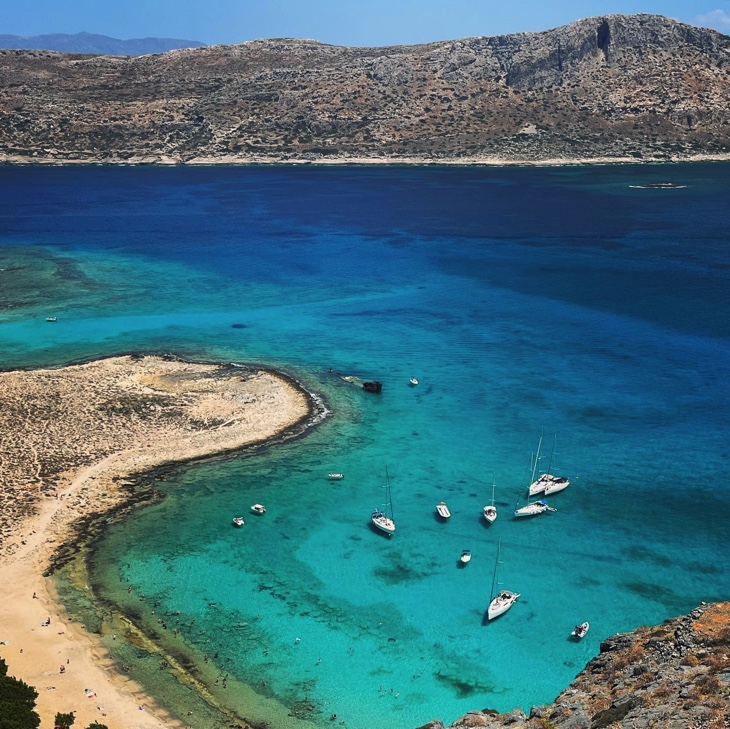
Gramboussa Restaurant offers accessible dining with a menu blending traditional and innovative Cretan cuisine. Meal prices range from €5 to €15 ($5.50–$16, £4–£13) per person, ensuring options for every diner.
Sunbathing on Balos’ shimmering sands is a worthwhile experience. Other activities include snorkelling, which reveals the beach’s beautiful underwater marine life. Kids enjoy frolicking in the shallow waters, which remain warm throughout the day. Lifeguards keep a vigilant watch over the beach, ensuring that swimmers and sunbathers stay safe.
The beach’s gentle slope into the sea provides a safe environment for children during water activities. Entry to Balos Beach costs €1 ($1.10, £0.87) but is free for children aged 12 and under, with some tour packages covering the fee. Reviews highlight the beach’s natural beauty and serene atmosphere, often describing it as an untouched and unparalleled paradise.
10. Discover the authenticity of Apokoronas Villages
The Apokoronas Villages, east of Chania, display Chania’s authentic lifestyle that’s ready to be discovered. The villages have quaint settlements that offer a glimpse into the traditional Cretan way of life, unspoiled by the hustle and bustle of urban centres. The villages are defined by olive groves and age-old chapels, which are all set against the backdrop of the White Mountains. Apokoronas Villages is a Chania must-see for those seeking genuine experiences.
300 travellers find their way to the Apokoronas Villages each day. Visitors soak in the relaxed atmosphere and relish the natural beauty of Chania. The locals pride themselves on sharing their culture and traditions through stories with the visitors, which adds to the visit’s authenticity.
The main village of Apokoronas, Vamos, is 34 kilometres (21.13 miles) away from Chania International Airport. A 45-minute drive through picturesque landscapes connects visitors to the charming destinations. The villages boast stone houses with beautiful courtyards and traditional taverns, with artisanal workshops dotting the landscape.
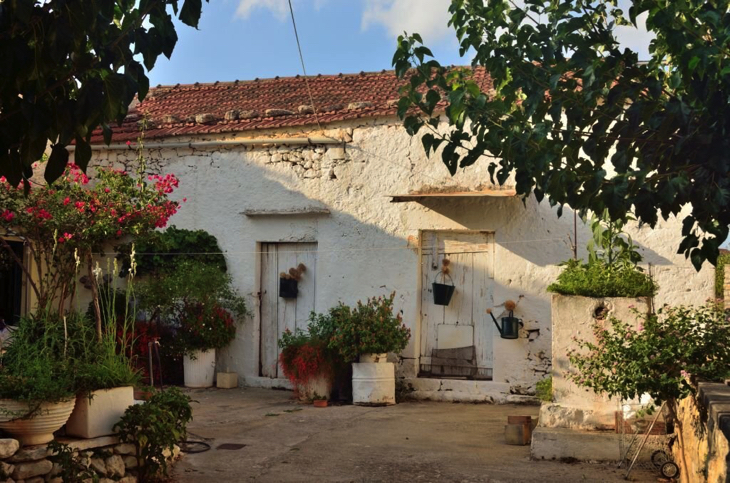
Walking tours reveal architectural gems and historical landmarks that narrate tales of the past. Kids enjoy interacting with local farm animals while exploring the lush fields. Pottery classes are organised by the villages for kids and adults to take part in.
Elianthos Villas is an accommodation with close proximity to the main village of Vamos. The villas combine modern comfort with Cretan traditional design, which offers guests a serene environment mirroring Apokoronas’ serenity.
Subtle touches of luxury and curated amenities contribute to its per-night rate of 85 € to 120 € ($91.23–$128.87, £73.77–£104.17). Another establishment near Vamos is Maroubas. Maroubas offers a cosy environment with an affordable menu. Prices range from 9 € to 23 € ($9.66–$24.69, £7.81–£19.97) per person.
The inhabitants of the Apokoronas Villages maintain a close-knit community that promotes a welcoming and secure environment. Local authorities have made provisions for well-lit streets and regular patrols that ensure safety for families and solo travellers. Visiting Apokoronas Villages requires no entrance fee.
Individual attractions or workshops within the villages instead have nominal charges to support local artisans and maintain the integrity of their offerings. The fees vary but remain reasonable, which provides high value for money in exchange for the enriching experiences they offer.
The warmth of the locals is a positive point mentioned in reviews. Other positives are the beauty of the landscape and the calmness that the villages offer. Past travellers emphasise the contrast between the settlements and the tourist-heavy areas, praising Apokoronas for retaining its genuine Cretan charm.
11. Experience a romantic dinner by the seashore
A romantic dinner experience by the seashore is unmatched in Chania. The combination of the waves and the marvellous beauty of Chania’s oceanview provides an exceptional dining experience. 600 diners enjoy the food and view at Chania’s seaside restaurants every evening.
Theodosi Restaurant in Chania is one seaside restaurant that’s worth the visit. The restaurant is a short 24-minute drive from Chania Airport, which is 16 kilometres (9.94 miles) away. Seaside restaurants in Chania offer a breathtaking view that combines clear skies and the azure sea.
The amazing atmosphere has made seaside dining a Chania must-see for many. Couples, old and new, get to soak in the beautiful surroundings with each other. Families enjoy the scenery as well, with children relishing the restaurant’s curated kid-friendly offerings. Kids get to observe the marine life and gaze at boats sailing in the distance while playing with the sand under their feet.
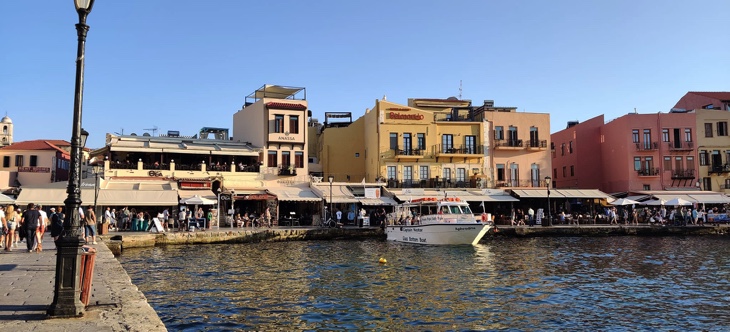
Another local seaside restaurant is Tsalikis Seafood, with meals costing 20 € ($21.47, £17.35) per person. The restaurant offers stunning beachside views. The Alexis Hotel is nearby, with an overnight rate of 70 € ($75.14, £60.72) for rooms with a serene and calm ambience.
Local authorities and restaurant management have implemented stringent measures to ensure the safety of diners. Surveillance systems are present, and the staff is well-trained, promoting travellers’ confidence in their well-being.
There is no entrance fee required for customers to enjoy the seaside restaurants’ views, with meals having varying prices across restaurants. Many reviews emphasise the impeccable service and delicious meals, which are paired with unrivalled views of Chania’s shoreline.
12. Enjoy a traditional Greek meal at a local taverna
Enjoying a traditional Greek meal at a local taverna in Chania is an unparalleled experience. A taverna holds a special place in Greek culture. Tavernas are casual and informal restaurants where Greeks enjoy meals and drinks with each other.
2,000 visitors immerse themselves every day in the rich flavours and hospitality offered by taverns across Chania. It’s an experience that reflects the essence of Greek life. Tamam Restaurant is one of the best tavernas in Chania and a certified Chania must-see.
Tamam Restaurant in Chania is 14 kilometres (8.70 miles) from Chania Airport. The restaurant is a 20-minute drive away. Tavernas have an ambiance that is warm and welcoming, with interiors made of stone and wooden beams.
Soft music, sometimes live, complements the vibe and provides an authentic Greek experience. Children enjoy the tavernas’ range of kid-friendly meals. Even the youngest members of the family enjoy their dining experience.
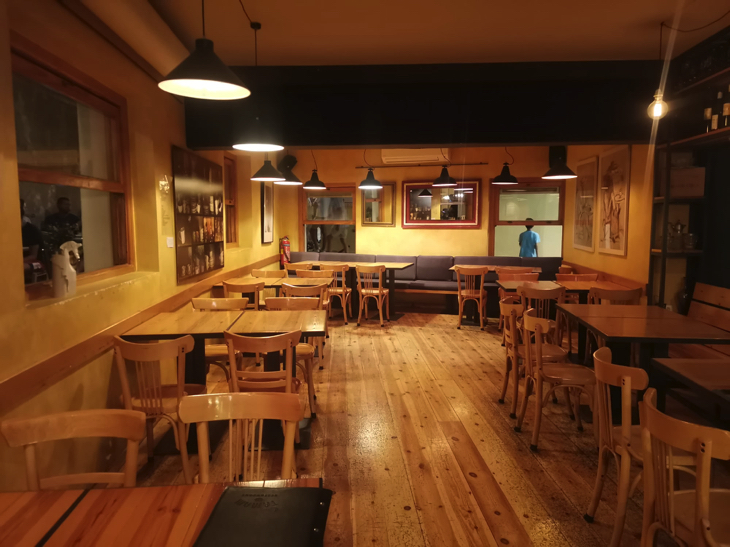
Colombo Kitchen and Bar is another notable dining option near Tamam Restaurant. An average meal at Colombo Kitchen and Bar costs around 20 € to 30 € ($21.47–$32.21, £17.35–£26.02) per person, excluding beverages. Chania Flair Boutique Hotel is a short walk from Tamam Restaurant. The average overnight rate ranges between 180 € and 220 € ($193.25–$236.23, £156.89–£191.74).
Eating at local tavernas in Chania is safe, with establishments maintaining high hygiene standards. Locals and staff are pleasant to visitors, and they ensure a comfortable environment for everyone. Tavernas do not have entrance fees, but offers differ per restaurant.
Travellers share positive reviews about their experiences in Chania’s tavernas. The hospitality, and flavours combined with the ambience receive praise, making these establishments top recommendations for anyone visiting the city. A visit to Chania is incomplete without eating at tavernas.
13. Stock up on local goods at the Municipal Market
The Municipal Market is a vibrant hub located in the centre of Old Chania Town where visitors stock up on local goods. The Municipal Market draws locals and tourists to its bustling stalls. Many regard the Municipal Market as a Chania must-see given its rich variety of local goods and genuine Cretan produce. A visit to the market offers a deep dive into the town’s everyday life and culture.
The market attracts around 1,500 visitors every day on average. The bustling atmosphere serves as proof of its popularity among tourists looking for souvenirs and locals shopping for everyday essentials. The market is a melting pot of cultures and traditions.
The Municipal Market lies approximately 14 kilometres (8.70 miles) from Chania International Airport. The journey from the airport to the market takes 20 minutes. Ease of access ensures that the market remains a frequented spot throughout the year.
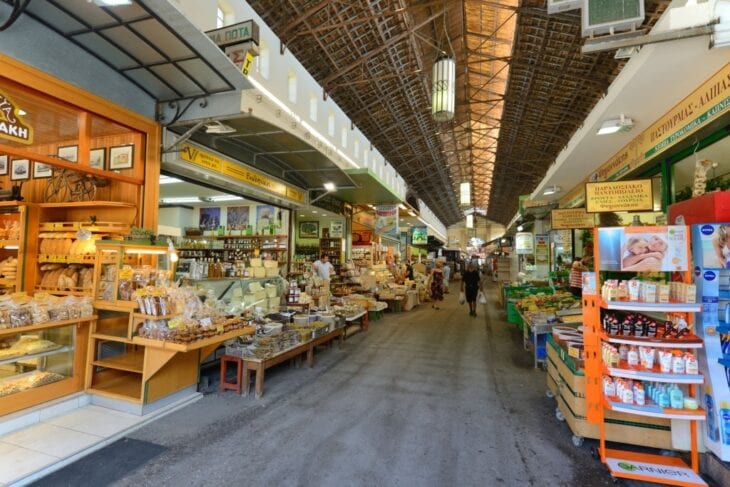
The Municipal Market boasts a wide array of stalls that offer unique products. Visitors find various products, from fresh produce and local cheeses to handcrafted jewellery and traditional Cretan textiles. The market presents an opportunity for kids to learn about different local goods and taste fresh produce while picking up a few Greek phrases from welcoming stall owners.
Elia Daliani is a nearby hotel with a unique charm and allure. The hotel merges Cretan architectural heritage with contemporary amenities that make the stay comfortable and cultural. Its interiors are designed with rich wooden elements and subtle decorative nuances. The rate is €120 to €160 for a night’s stay, which offers a good balance between luxury and affordability.
Mesostrato is a restaurant just a short walk from the market centre. Its authentic Cretan dishes, made with the best local ingredients, impress customers. Prices range from 9 € to 23 € ($9.66–$24.69, £7.81–£19.97) per person.
The Municipal Market is safe, with regular police patrols and vigilant stall owners that ensure a secure environment for shoppers. Clear signage and organised pathways aid in easy navigation and prevent overcrowding. Entrance to the Municipal Market is free of charge.
The prices for goods vary depending on the stall and the items being sold. Haggling is a common practise, and many sellers expect it as long as it is done with respect. Reviews give plus points to the market’s authenticity and charm.
Visitors appreciate the opportunity to interact with locals and sample traditional Cretan food. Handcrafted souvenirs sold in the market get praise. The market’s lively ambience combined with various goods makes it a memorable destination for those seeking a genuine Chania experience.
14. Hike the Samaria Gorge
A day trip to hike the Samaria Gorge is worth embarking on. The Samaria Gorge is Europe’s longest gorge with its 16-kilometre length, making it a Chania must-see. The gorge ends at the Libyan Sea in Agia Roumeli.
3,000 hikers set out to explore the gorge every day. The pathway leads them through the woods and concludes at the Iron Gates, the narrowest point of the gorge. Samaria Gorge is 60 kilometres away from Chania International Airport, a drive that takes 1 hour and 15 minutes.
The gorge is home to diverse bird varieties, drawing bird watchers to visit. Photographers have endless scenes to capture. Children find the Iron Gates enchanting, where the towering rock faces are a mere 4 metres apart. Guided tours offer tales of the gorge’s history and its rich biodiversity.
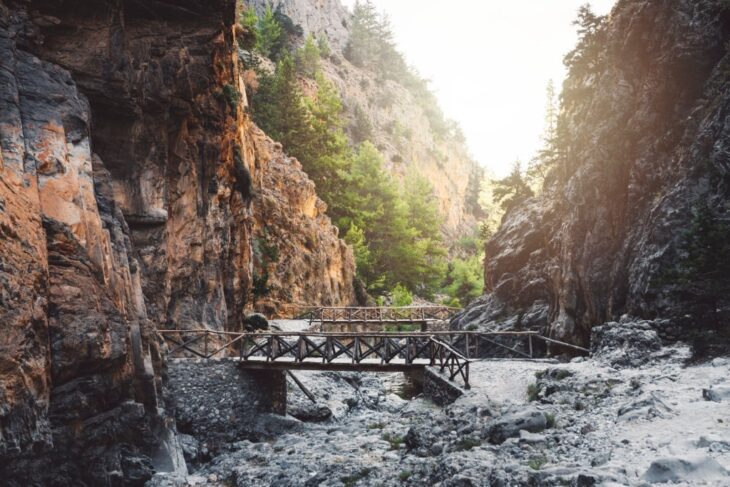
Vantaris Palace Hotel is nearby, with an average rate of 150 € ($161.04, £130.73) per night. Guests commend its welcoming ambiance and the impeccable service that make their stay memorable. Georgia’s Traditional Taverna is near the Iron Gates, offering patrons authentic Cretan flavours in a cozy setting at an average cost of 20 € ($21.47, £17.35) per person.
The park authorities maintain the trails with the strategic placement of first aid stations to cater to emergencies. Visitors must wear appropriate footwear and carry enough water to ensure safety.
The entrance fee is 5 € ($5.37, £4.36), and access is free for children under 15 years old. Travellers leave positive reviews for the gorge, often describing feelings of accomplishment upon completing the hike and praising the photographic opportunities that the varied landscapes offer.
What are the top museums to visit in Chania?
The top museums to visit in Chania are listed below.
- Maritime Museum of Crete: The Maritime Museum of Crete, situated at the entrance of the historic Firka Fortress, offers a comprehensive overview of Crete’s rich naval history. Spanning from the Bronze Age to modern times, the museum showcases models of ships, nautical instruments, and relics from various wars. A standout exhibit includes a Minoan ship’s replica, showcasing ancient shipbuilding techniques. It educates visitors about maritime history and provides insights into Crete’s strategic importance in the Mediterranean. It is a must-visit for those interested in naval history and the island’s role in shaping it.

- Byzantine/Post-Byzantine Collection of Chania: Housed in the historic church of San Salvatore, this collection offers a glimpse into the Byzantine and post-Byzantine periods in Chania. The artefacts, which range from statues and tomb inscriptions to rare Byzantine icons, depict the region’s religious and artistic evolution. Visitors can explore sections dedicated to the Byzantine era, the Venetian period, and the various influences that shaped Chania’s cultural landscape.

- Greek National Football Team Museum: Located in Chania’s city centre, the Greek National Football Team Museum pays homage to the Greek national football team and its illustrious history. It has a collection of jerseys from renowned players, tickets from significant matches, and other football memorabilia. Upon entering, visitors are warmly greeted by the passionate owner, Nikos Flekkas, who eagerly shares stories and artefacts related to visitors’ home countries and favourite football clubs. It offers a personal touch, making it a unique and memorable experience for football enthusiasts. Moreover, its central location and interactive exhibits make it an engaging stop for tourists of all ages.

- The Folklore Museum of Chania. The Folklore Museum of Chania, situated in Chania’s old town, Crete, spans 6,000 square meters and preserves the cultural history of the Chania region. Organized into five themes, its exhibits, including artifacts, audiovisuals, and replicas, depict traditional Cretan life. Highlights include the “Cretan House” with historically accurate reconstructions of household items. Covering domestic, agricultural, religious, and artisanal aspects, the museum offers visitors a rich exploration of Cretan heritage, emphasizing both continuity and transformation in the region’s cultural legacy.
- The Historical Archive of Crete. The Historical Archive of Crete, founded in Chania in 1920, ranks among Greece’s foremost archival institutions, managed by the Ministry of Education under the General Archives of the State. It holds about 1 million documents, including key collections from the Cretan Revolution, Turkish Administration, and German Occupation. The archive features historical and folklore exhibits, showcasing significant artifacts from Cretan history, a tribute to Eleftherios Venizelos, and a traditional Cretan household replica. Its mission is to preserve and promote Crete’s historical records, ensuring public and scholarly access.
- Minoan’s World, the 9D Experience. Minoan’s World, the 9D Experience, merges Minoan history with advanced technology for an interactive visitor experience. The 3D Museum showcases lifelike statues and immersive 3D art, allowing visitors to pose with figures like the Minotaur and Zeus. The highlight is a 9D cinema journey, featuring sensory effects and narration in ten languages, recounting Zeus’s story, the adventures of Daedalus and Icarus, and the eruption of Santorini’s volcano. Operating Monday to Saturday, from 11:00 AM to 4:00 PM, Minoan’s World offers a unique blend of history and innovation.
- Catholicon of the Venetian Monastery of St. Francis. The Catholicon of the Venetian Monastery of St. Francis, also known as the Monastery of Agios Fragkiskos, is a historic 16th-century Venetian structure on Halidon Street in Chania’s Old Town. Initially associated with the Order of Friars Minor, it survived the 1595 earthquake and was later converted to a mosque during the Ottoman era. Over the years, it has served as a cinema, café, and prison, and housed the Archaeological Museum collection from 1963 to 2020. Despite reconstruction, few original elements, like part of the bell tower, remain. Plans are underway to restore it as a cultural center, potentially hosting a Byzantine-Medieval museum.
- Eleftherios Venizelos House. The Eleftherios Venizelos House in Chalepa, Chania, was the home of the influential Greek statesman Eleftherios Venizelos for over 30 years. Key events, like his involvement in the 1897 Revolution and the National Defense movement, were rooted here. Now a museum, it preserves original furnishings from 1925-1935 and showcases artifacts, personal items, and photos, offering a unique insight into Venizelos’s life and contributions to Greek history.
- Municipal Art Gallery of Chania. The Municipal Art Gallery of Chania is a cultural landmark showcasing an extensive collection of artworks, including paintings, sculptures, and engravings from the 18th century onward, featuring contributions from Greek and local artists. Established through a major donation by Lykourgos Manoysakis in the 1950s, the collection has grown with works from artists like Kostas Ioannidis and Panagiotis Grabbalos. The gallery supports art appreciation through exhibitions, educational programs, and publications, fostering cultural engagement within the Chania community.
- Archaeological Museum of Chania. The Archaeological Museum of Chania, located in Chalepa and designed by Theofanis Bobotis, covers 12 acres with views of Chania’s cityscape and seafront. Its permanent exhibition, organized across three ground-floor galleries and an upper floor, spans the region’s archaeological history, showcasing artefacts that illuminate past social, religious, and daily life. Key exhibits trace Chania’s development from prehistoric times, highlighting Minoan, Mycenaean, and city-state periods, with tactile and digital elements enhancing the experience. The upper gallery includes items from the Mitsotakis Collection, dating from the 4th millennium BC to the 3rd century AD.
- Museum of Typography. The Museum of Typography in Greece, founded by Yannis and Eleni Garedakis, highlights the evolution of printing from the Middle Ages to today. Established in 2005 near the Haniotika Nea newspaper’s facilities, it expanded in 2012 and now covers 1,400 square meters. Visitors engage with history through hands-on use of 19th-century presses and informative videos. Hosting diverse events like conferences, performances, and an international poster contest, it became a European Route of Industrial Heritage member in 2020 and was nominated for the European Museum of the Year Award in 2016.
- School Life Museum. The Museum of School Life in Nerokourou, Chania, preserves the history of educational practices, showcasing documents, teaching tools, and artefacts that illustrate schooling across different eras. Focused on researching and documenting education within Cretan history, the museum connects historical insights with current educational practices, emphasizing the importance of past influences on future education.
- War Museum Askifou. The War Museum Askifou, founded by Georgios A. Hatzidakis, preserves over 2,000 artefacts from 1940-1944, reflecting Crete’s resilience during WWII. Georgios, who survived the German invasion’s devastation, dedicated his life to collecting items that honor Cretan resistance and the memory of his ancestors’ valor. His son, Andreas, continues this legacy, expanding the collection and inspiring younger generations to connect with their history.
What is Chania best known for?
Chania, Greece is known for its rich history and natural beauty in the Mediterranean. The city is located on the island of Crete. Chania has witnessed the passage of various civilizations, from the Minoans to the Venetians, with each leaving its unique mark.
The Venetian Harbour serves as one of Chania’s most significant historical landmarks. The harbour was constructed by the Venetians during their rule in the 14th century. It remains a testament to the Venetian’s architectural prowess and influence in the region. The Old Town nearby narrates stories from the past through its meandering streets and aged structures.
Another iconic structure is the lighthouse, which shines a gentle light over the harbour. Its presence has provided guidance for sailors over the centuries, and it stands as a symbol of Chania’s maritime legacy today. The Samaria Gorge attracts nature enthusiasts.
The Samaria Gorge is among Europe’s longest canyons. The gorge offers trekkers a challenging but rewarding experience through its breathtaking scenery. The beaches of Balos and Elafonissi, which offer recreation and relaxation, further demonstrate Chania’s natural beauty.
What are things to consider when visiting Chania?
Listed below are the things to consider when visiting Chania.
- Weather in Chania: Chania has a Mediterranean climate with hot summers and mild winters. Rainfall remains minimal during the summer months but increases during winter. Travellers need to pack appropriate clothing based on the season to ensure comfort throughout the visit.
- Travel arrangements to Chania: Chania International Airport welcomes flights from many international destinations. The town itself remains well connected with other parts of Crete through a network of buses and taxis. Renting a car is a popular choice for tourists who wish to explore the region at their own pace.
- Chania attractions to explore: Chania offers a variety of historical sites, natural wonders, and cultural experiences. The Old Town, with its Venetian architecture and iconic lighthouse, stands out as a must-visit spot. The Agora Market and the Archaeological Museum are other highlights that cater to diverse interests.
- Accommodation options in Chania: Chania boasts a wide range of accommodations, from luxury hotels to budget-friendly guesthouses. Many establishments provide breathtaking views of the harbour or the surrounding mountains. Booking accommodations in advance is advisable to secure the best deals and availability.
- Dining and culinary experiences in Chania: The town takes pride in its vibrant culinary scene. Local tavernas and cafes serve dishes rich in fresh and regional ingredients. The Cretan diet emphasises olive oil, fresh vegetables, and seafood. Sampling local delicacies and wines enhances the overall travel experience.
- Local customs and etiquette: Respecting local traditions and customs remains essential. Greeks appreciate polite gestures and are known for their hospitality. Learning a few basic phrases in Greek makes interactions more pleasant and leaves a positive impression on the locals.
- Safety precautions during the trip: Chania is safe for tourists. Petty crimes like pickpocketing are rare, with crowded places being safer. Visitors need to remain vigilant and avoid isolated areas after dark to ensure a worry-free stay.
- Currency and payment methods: Greece uses the Euro as its official currency. ATMs are available throughout Chania, and most establishments accept major credit cards. Keeping some cash handy for smaller transactions proves beneficial.
Is Chania a party place?
No, Chania is not a party place. Chania instead boasts a rich history and scenic landscapes with a relaxed ambience that caters to a diverse range of visitors. The Venetian harbour is one of the most iconic landmarks of the city, and the old town surrounding it stretches with its winding streets and historic buildings.
Visitors with the search query “Chania what to see?” gravitate towards areas where history meets the beauty of the Aegean Sea. The lighthouse is another top attraction, with its glow casting over the harbour, which sets a tranquil scene. Chania does offer a selection of nightlife spots, but the atmosphere remains more laid-back than that of a typical party destination.
Evening revellers find that the nightlife is balanced, which allows them to enjoy food and company without the overwhelming hustle associated with major party hubs. Chania is a gateway to the diverse landscapes of Crete. Mountains rise in the distance, while beaches with crystal-clear waters stretch along the coast.
Nature lovers cherish the opportunity to explore the Samaria Gorge, which is one of Europe’s longest canyons. The gorge promises an adventurous trek with spectacular views. Chania offers vibrant nightlife options, but the city remains relaxed, which makes it a perfect escape from the busy urban life.
Is Chania good for couples?
Yes, Chania is good for couples. Chania is a desirable destination for couples seeking both romance and adventure. The city has charm and exudes intimacy, which makes it an ideal backdrop for partners to create lasting memories together.
Chania offers a variety of experiences tailored for couples in love. The old town, with its narrow alleyways and historic architecture, provides an enchanting setting for strolls. Couples find joy in discovering hidden gems, from quaint cafes to artisan boutiques, as they navigate these cobbled paths. The Venetian harbour is a highlight of Chania and adds a romantic atmosphere with its serene waters and picturesque views.
Dining in Chania proves to be a memorable affair. Numerous waterfront restaurants serve delectable Cretan cuisine while allowing couples to indulge in culinary delights as they enjoy views of the sea. The freshness of local ingredients combined with the expertise of local chefs ensures that every meal turns into a gastronomic journey.
The beauty of Chania’s natural surroundings is inviting. The beaches near Chania have pristine sands and clear waters that provide a serene escape. Couples appreciate the tranquillity and partake in water activities or simply lounge by the shore while taking in the beauty of the Mediterranean.
Cultural enthusiasts find joy in the rich history of Chania. Numerous museums and historical sites dot the city. The locations provide insights into its storied past, and exploration of the sites allows couples to gain a deeper appreciation for the city’s heritage. Chania blends romanticism with its culture and nature, which allows couples to leave with their hearts full and their spirits rejuvenated.
Is it safe to walk around Chania?
Yes, Chania is a safe city to walk around in. Travellers are secure while exploring Chania on foot. The city maintains a reputation for being one of the safer destinations in Greece. Residents are known to be hospitable and welcoming to tourists.
The main areas of interest in Chania, such as the old town and the Venetian harbour, have well-lit streets and are populated until the late hours. The areas remain bustling with both locals and tourists, which provides an energetic and busy atmosphere that most find reassuring.
It’s wise for visitors to remain aware of their surroundings and practise basic safety precautions regardless of the location. It’s advisable to avoid areas with poor lighting during late hours and to be cautious of personal belongings. Instances of pickpocketing are rare, even less so in populous places.
Pedestrians need to be mindful of vehicles, as some streets are narrow and busy. Crossing roads at designated areas and being watchful of incoming traffic helps ensure a safe walking experience. Chania offers a blend of culture and natural beauty best explored by walking around. Safety concerns are minimal, with most visitors leaving with pleasant memories of their strolls through the city’s charming lanes and pathways.
How is the weather in Chania?
Chania enjoys Mediterranean weather characterised by mild winters and warm summers. Summers in Chania are warm and dry, with temperatures ranging from 26°C to 31°C. The months of July and August are the hottest, which makes them perfect for beach lovers and sunseekers. Sea breezes provide relief during the warmest hours, as they ensure the city doesn’t feel too hot.
Winters are mild, with temperatures almost never dropping below 12°C. Rainfall becomes more frequent in the winter months, such as during December and January, providing the region with its necessary water supply. Chania’s winters remain quite pleasant despite the occasional rain showers.
Spring and autumn offer a balance between the two. Temperatures during the seasons hover between 20°C and 25°C. Flowers bloom in spring, which gives the landscape a burst of colour, and autumn brings a calm atmosphere with cooler evenings.
Chania’s weather is predictable throughout the year. Chania’s range of weather makes it a popular destination for travellers seeking both sun and culture. The city’s coastal location ensures fresh air and moderate temperatures while providing a comfortable environment for exploration and relaxation.
When is the best time to visit Chania?
The best time for travellers to visit Chania is in May, one of the spring months. Chania is located on the northwest coast of Crete, and it boasts a Mediterranean climate with mild winters and warm summers. Chania experiences pleasant temperatures during May, which makes it perfect for strolling along the Venetian Harbour or sunbathing on its pristine beaches.
Spring offers a refreshing escape from the heat of summer and the chills of winter. The mild climate ensures comfortable and easy exploration. May provides a quieter atmosphere, as most tourists arrive during the peak summer months. May and the spring season allow visitors to enjoy the city’s attractions with fewer distractions.
Nature blooms in May, adding vibrancy to the landscapes. Wildflowers adorn the countryside, and the surrounding mountains display lush greenery, creating picturesque backdrops for memorable photographs. The sea is cooler than mid-summer but remains inviting for those wanting to take a dip.
Local festivals and events celebrating Greek Easter and other cultural traditions occur during the spring. The events offer travellers an authentic taste of Cretan culture. The festivities allow visitors to immerse themselves in the rich history and tradition of Chania, making the experience more memorable.
How many days is enough for Chania’s visit?
Three days is enough for a visit to Chania. Chania offers various experiences for its visitors, from its Venetian harbour to the maze-like alleys of the Old Town. The town’s rich history and vibrant local culture, along with the stunning natural beauty surrounding it, require meticulous planning for travellers keen to visit Chania.
Travellers get a good introduction to the city’s main attractions within three days. The first day allows visitors to explore the historic Old Town, which is home to various museums, churches, and ancient remnants that echo tales of the past. Meandering through the alleys and soaking up the local atmosphere provides a glimpse into the essence of Chania.
The second day’s focus is on the city’s natural beauty. Beaches, such as Elafonissi and Balos, are world-renowned and offer an escape into the crystal-clear waters of the Mediterranean. The long journey towards the beaches showcases Crete’s diverse landscapes, from rugged mountains to serene coastlines.
Diving into the local culture on the third day allows for the exploration of local markets and the tasting of Cretan delicacies. Engaging with the local artisans offers insights into the daily life and traditions of the region. It provides a balance between relaxation and immersion.
Three days is enough for a short introduction to Chania, but extending the stay allows for a deeper dive into its hidden gems and neighbouring villages. Chania is unforgettable, regardless of the duration. It leaves an indelible mark on visitors’ travel escapades.
What are the nearby Restaurants in Chania?
Listed below are the nearby restaurants in Chania.
- Barraki: Barraki’s ambience is reminiscent of a traditional Cretan home. Soft candlelight and wooden furnishings create a cosy environment. The menu boasts a range of delicacies. Diners praise the freshness and authenticity of their dishes, with each bite narrating a tale of Cretan culture.
- Prassein Aloga: The ambience at Prassein Aloga is defined by its sleek interiors combined with rustic Cretan touches. The open kitchen concept adds flair to the dining experience. The menu represents the best of Cretan cuisine.
- Mezedosxoleion: Mezedosxoleion’s interior feels like stepping into a Cretan festival. Local music complements the vibrant ambience, which sets the mood for a delightful meal.
- Ta Chalkina: Modern elegance meets Cretan charm at Ta Chalkina. The ambient lighting and artistic decor pieces evoke a sense of warmth and comfort. The menu is an ode to local flavours.
- The Well of the Turk: The Well of the Turk is one of the Nearby Restaurants in Chania. The restaurant exudes an old-world charm through walls that whisper tales of Chania’s multicultural past. Diners are treated to dishes that are a fusion of Cretan and Middle Eastern flavours amidst the historic setting.
- Neoria Fish Tavern: Neoria Fish Tavern provides a serene ambience with its beachside setting, where the sound of waves complements the dining experience. Gauzy curtains and nautical-themed decor enhance the coastal vibe.
- The Monastery of Karolos: The Monastery of Karolos provides a tranquil dining environment while being set against an architectural marvel. The stone walls and arches transport diners to a bygone era.
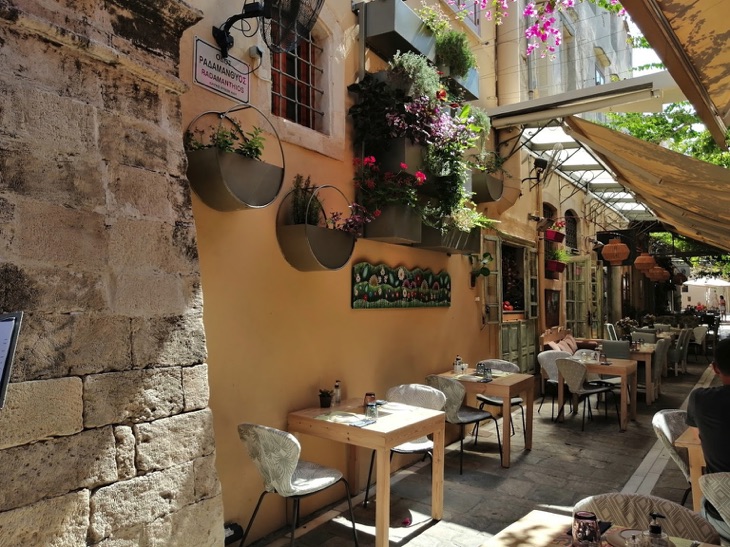
What time do people eat dinner in Chania?
Chania and most of Greece have dining customs that differ from those of many other Western countries, with dinner starting at 9 in the evening. Dinner time starts later during the warm summer months. The late dining habits have roots in the Mediterranean lifestyle and the climate of the region.
Warm daytime temperatures lead residents to seek refuge during the hottest hours, which results in a later start to the evening. The habit has cultivated an evening culture where locals enjoy leisurely strolls or having a drink before their evening meal. Visitors to Chania who dine earlier than 9 p.m. find themselves in restaurants with few locals.
The visitors are surrounded by other tourists or early bird diners when dining earlier. Restaurants start to fill up with locals as the clock nears 9 p.m. or even 10 p.m. The idea of socialising and spending quality time with loved ones influences the late dining culture. Dinner for locals is a social event. It’s a time to gather and share stories of the day while enjoying each other’s company.
Visitors wanting to experience an authentic dining experience in Chania must prepare for a late dinner. Locals start to dine at 9 p.m. Embracing the local dining customs provides insight into the rhythm of life in Chania and the importance of shared meals in the local culture.
What is the average cost of a meal in Chania, Greece?
Meals in Chania, Greece, range from 10 € to 40 € ($10.73–$42.93, £8.72–£34.86), depending on the restaurants travellers choose to dine in. Chania offers a diverse range of dining options that cater to various budgets. One of the primary attractions of the town is its authentic local cuisine, which reflects a rich culinary history infused with flavours from different cultures.
A main dish at local tavernas, such as moussaka or pastitsio, ranges from 10 € to 20 € ($10.73–$21.47, £8.72–£17.35). Tavernas provide the perfect setting to experience traditional Cretan cuisine in its most genuine form. Drinks, including the famous raki or local wine, add to the cost but remain reasonably priced, with a glass costing between 3 € and 5 € ($3.22–$5.37, £2.62–£4.36).
Chania boasts several fine-dining restaurants for those seeking more upscale dining experiences. Prices are higher, with a main dish averaging between 20 € and 40 € ($21.47–$42.93, £17.35–£34.86), with the addition of appetisers and desserts increasing the total bill.
Chania also has a bustling street food scene. Gyros and souvlaki are favourites among both locals and tourists. These delightful wraps filled with meat, vegetables, and sauces are delicious and affordable, usually priced at 2 € to 5 € ($2.15–$5.37, £1.74–£4.36) each. Establishments near the Venetian harbour or popular tourist spots are pricier than those tucked away in quieter streets or neighbourhoods.
How much money should tourists bring when visiting Chania?
The amount of money tourists need when visiting Chania depends on several factors, with 500 € ($536.79, £435.78) being a good baseline for a recommended three-day trip. Activities in Chania range from free walks along the Venetian harbour to paid guided tours and excursions. Accommodations vary as well, with options ranging from budget-friendly guesthouses to more upscale hotels.
A modest hotel room costs around 60 € to 100 € ($64.41–$107.36, £52.29–£87.16) per night on average. Dining at local tavernas provides an authentic culinary experience, costing around 10 € to 20 € ($10.73–$21.47, £8.72–£17.35) for a main dish. Transportation, consisting of public buses or rented cars, adds to the budget, with a daily bus ticket priced at around 5 € ($5.37, £4.36) and car rentals averaging at least 90 € ($96.62, £78.43) per day.
A daily budget of 150 € to 200 € ($161.04–$214.72, £130.73–£174.31) is reasonable for a comfortable stay, taking into account other miscellaneous expenses such as souvenirs and other purchases, along with entrance fees to attractions. A three-day trip sets visitors back a total of 450 € to 600 € ($483.13–$644.17, £391.86–£522.93) for a modest stay.
While 500 € ($536.79, £435.78) is enough, it can feel tight for a short stay or for those who are frugal and intend to limit their paid activities and dining experiences. However, this amount may be limiting for tourists desiring a longer stay or those who wish to indulge in more tours and dine in fancier restaurants. 500 € provides a good foundation for a trip to Chania, but having a buffer beyond that offers flexibility and peace of mind during the visit, unlocking the best experiences when visiting the city.
Is Chania an expensive place to visit?
No, Chania is not an expensive place to visit compared to other European destinations. Chania offers a variety of accommodations and dining options, along with activities that cater to different budgets. Visitors find that staying in local guesthouses or family-run hotels provides affordable lodging options. Eating in traditional tavernas, which serve local Cretan dishes, costs less than dining in upscale restaurants while offering an authentic culinary experience.
Chania boasts many free or low-cost attractions, such as its picturesque Venetian harbour, where one can spend hours strolling and absorbing the rich history without spending a dime. The local markets sell a range of products, from fresh produce to handcrafted items, allowing tourists to shop without breaking the bank. Transportation within the town remains reasonably priced, with public buses serving as a cost-effective way to explore.
Guided tours or boat excursions come with a higher price tag, but there are ample opportunities for budget-friendly exploration. Beaches near Chania, such as Elafonissi and Balos, offer crystal clear waters and scenic views without entrance fees. Visitors who opt for self-guided walks or hikes discover the beauty of the region at their own pace and on their own terms.
There are more luxurious options available for those who wish to indulge. Upscale hotels and gourmet restaurants, along with boutique shopping experiences, cater to those seeking a more lavish vacation. Prices in Chania, even within that sphere, are more moderate than in cities like Paris or Rome.
Chania provides a balance of affordability and luxury. There are avenues to splurge in Chania, but it remains budget-friendly. Chania serves as a premium destination for all travellers, regardless of budget.
Where to rent a Car in Chania?
Chania has local car rental agencies and online platforms for visitors to take advantage of. Chania is filled with rental agencies near popular areas, such as the airport, the central bus station, and tourist destinations like Old Town. The establishments provide a range of vehicles suitable for different terrains and preferences. Offerings include compact cars that are perfect for city driving and SUVs tailored for more rugged adventures.
Many tourists prefer the convenience of online platforms, as they allow visitors to Rent a Car in Chania with ease. Checking availability online, such as through Rental Center Crete, allows visitors to compare providers and check for reviews before locking in a reservation. Travel agencies offer car rental services as part of travel packages.
Renting a car in Chania is a straightforward process due to the various options available. Driving through Chania enhances the exploration of the town. Car rental makes the travel experience better as visitors take in what Chania has to offer without haste.
How much is the Car Rental in Chania?
The pricing of car rental in Chania starts from 95 € to 184 € ($102.01–$197.47, £82.79–£160.30), with variations based on several factors. One factor is the type of vehicle. For example, compact cars are more affordable, with prices starting at 95 € ($102.01, £82.79) per day. Convertibles cost 184 € ($197.47, £160.30) per day, as a comparison. The prices include the required car insurance.
Demand for rental cars increases during peak tourist season in the summer months, leading to a 20–30% surge in pricing. Off-peak season, which includes the colder months, equates to more affordable prices due to a lack of demand. The duration of the rental is another factor influencing the prices.
Short-term rentals, such as those lasting one to two days, have a higher day rate, while long-term rentals, such as those lasting one week or longer, often come with discounts. Visitors who book in advance can take advantage of car rental agencies’ promotional deals or discounts. Extras and add-ons also factor into the total cost.
Renters have the option to request GPS systems or child car seats, for example. Getting wider-coverage insurance is another example of an add-on. The pick-up and drop-off locations also affect the price. For instance, convenience fees are often charged when picking up and dropping off the car at the airport.
Renting a car in Chania requires thorough research so that comparisons can be made across various agencies. Additional factors, such as customer reviews and inclusions, are best considered prior to booking. The car rental market in Chania presents a range of prices, so being aware of the factors helps renters make informed decisions and get the best value for their money.
Is a Driver’s Licence Required to Rent a Car in Chania?
Yes, a driver’s licence is required to rent a car in Chania. Every car rental agency in Chania mandates the presentation of a valid driver’s licence at the start of the rental process. The policy ensures that individuals have met the necessary driving standards.
The Driver’s Licence Required to Rent a Car in Chania depends on the visitor’s country of origin. For example, visitors from the EU are allowed to use a driver’s licence issued in their home country for renting and driving in Chania. EU licences are recognised, and there’s no need for additional documentation related to driving skills.
The design and standards of EU licences make them recognisable and acceptable across member states. Non-EU visitors, on the other hand, need to provide their national driver’s licence along with an International Driving Permit (IDP). The IDP acts as a translation of the original licence, so it’s understandable by local Chania authorities.
Renting a car in Chania requires a valid driver’s licence. Renting is easier for EU visitors, as their national licence already suffices. Non-EU visitors, in contrast, are required to provide their original licence and procure an IDP in addition.
Does Driving in Chania Require Car Insurance?
Yes, car insurance is required when driving in Chania. Every vehicle on the road in Chania must have a basic insurance policy. The reason behind the requirement revolves around the protection of all road users. Accidents happen, and insurance ensures that drivers, passengers, pedestrians, and property owners receive compensation in the event of damage or injury.
Car insurance policies vary, but all provide essential coverage. Third-party liability insurance is the most basic form of insurance and is mandatory. It covers damages inflicted upon other vehicles, property, or individuals in the event of an accident that is deemed the fault of the insured party.
Comprehensive and collision insurance exist. Comprehensive insurance covers damages to the insured vehicle from non-collision incidents like theft, fire, or natural disasters. Collision insurance deals with damages from accidents involving the insured vehicle. The options are not mandatory but offer additional protection and peace of mind for drivers.
Car rental agencies in Chania make things easier despite the fact that Driving in Chania Requires Car Insurance. The agencies include third-party liability insurance as part of their standard rental agreements. Renters have the option to upgrade to comprehensive or collision insurance at an extra cost. The rented vehicle remains the responsibility of the individual renting it.
Insurance rates in Chania vary based on several factors, such as vehicle type and the selected coverage. Drivers must understand their insurance policies and know what is covered. The requirement to have insurance is a legal obligation and a critical tool for protection and security on the road.
How far is Chania from the nearest airport?
Chania’s nearest airport is Chania International Airport. The distance between the two is approximately 15 kilometres (9.32 miles). A drive from the airport to the town takes 20 minutes under normal traffic conditions. The route is straightforward, making it easy for travellers to navigate.
There are several points of interest along the way. One such spot is Agioi Apostoloi Park, a serene green space ideal for a brief stop or a leisurely walk. Another location worth noting is Chrissi Akti, a beach known for its calm waters and golden sands.
Detouring through the town’s outskirts offers a glimpse, for those interested in Chania sightseeing, of its architectural and historical treasures. The town itself brims with ancient buildings, Venetian structures, and narrow streets that speak of its storied past. Visitors find it a captivating experience, blending the allure of history with the vibrancy of modern-day life.
The drive from Chania International Airport to Chania is short and scenic. The journey becomes an integral part of the travel experience. Visitors are guaranteed to enjoy Chania as soon as their feet land on the ground, with its notable stopovers showcasing Chania’s rich history.
What are the nearby Hotels in Chania?
Listed below are the nearby hotels in Chania.
- Casa Delfino Hotel & Spa: Casa Delfino is a boutique hotel located in Chania’s Old Town. It boasts exquisite Venetian architecture, with each room having a unique character. The hotel’s spa is perfect for travellers looking to rejuvenate after exploring the town. Proximity to major attractions in Chania makes it a favourite among many visitors.
- Samaria Hotel: Samaria Hotel is a short walk from the old Venetian Harbour. Modern amenities paired with sophisticated designs provide a comfortable setting for guests. The swimming pool and the restaurant add to the hotel’s charm, which ensures travellers have everything they need within reach. Guests praise the warm hospitality and the strategic position of the hotel.
- Kydon, The Heart City Hotel: Kydon is one of the Nearby Hotels in Chania. It’s found in the bustling city centre and offers modern luxury in an urban setting. Guests enjoy the panoramic views of the city and the White Mountains, which provide a captivating backdrop. The hotel features spacious rooms with contemporary designs and top-notch facilities. Dining at the on-site restaurant allows visitors to taste the culinary delights of Crete.
- Domus Renier Boutique Hotel: Domus Renier is another hotel in the Venetian harbour. It exudes a historic charm that transports guests back in time. The hotel’s architecture reflects Chania’s rich history, which gives it a unique character. Each room is designed to provide an authentic experience. Guests find solace in the tranquil ambience and the impeccable service that the hotel offers.
Is Chania Crete worth visiting?
Yes, Chania, Crete is worth visiting. Chania offers a blend of cultures and a rich history. Its diverse past is evident in landmarks and preserved areas, which make Chania a must-see destination for history enthusiasts. One history-filled location is the Maritime Museum, which provides a detailed account of Crete’s maritime endeavours.
The Old Venetian Port is another highlight. The port was once pivotal in trade but now thrives as a gathering spot with cafes set in ancient buildings. Beaches, such as Balos and Elafonissi, attract many tourists due to their natural beauty. Balos boasts clear waters, and Elafonissi is distinctive with its pink-hued sands.
The Akrotiri Peninsula, known for its religious significance, houses the Monastery of Agia Triada. The monastery impresses visitors with its architecture and the tranquillity it offers. Walking through Chania Town gives one a feel of its vibrant life, with the Municipal Market standing out as a hub where local goods, from produce to crafts, are available.
Chania, Crete is a captivating blend of ancient architecture, vibrant culture, and breathtaking natural beauty. Its Venetian harbour and its narrow alleys, along with historical monuments, transport visitors to a bygone era. Chania offers a unique and unforgettable travel experience with its pristine beaches and delectable Cretan cuisine.
Last updated on January 21st, 2025








